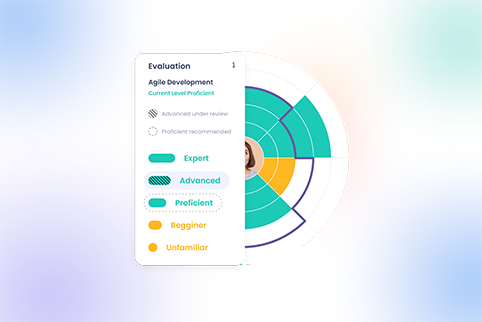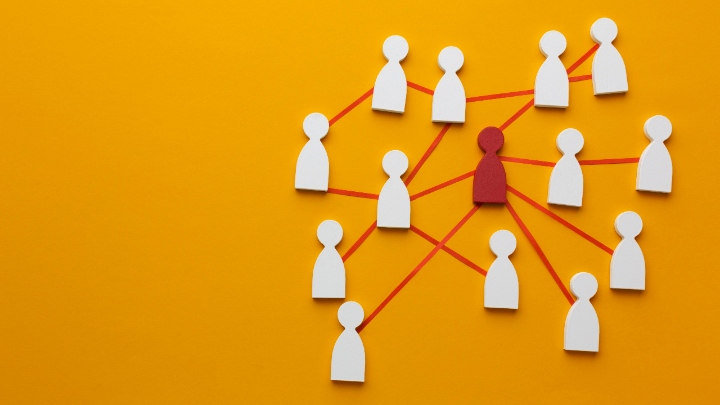
As we’re approaching the end of the year, we’re also entering a time for planning, in which C-level executives and top strategists are focused on budgets, KPIs, and growth areas. Innovation in HR is also an important part of these discussions, being a desirable outcome with ramifications across the entire employee experience and multiple business functions.
This type of project often involves the collaboration of multiple stakeholders, from top leadership to the Chief Human Resources Officer (CHRO) and technology experts (IT) — all seeking to identify and implement the optimal solutions to drive HR innovation in a way that makes sense for their company.
In this article, we explore the importance of HR innovation and some of the successful approaches and tools that are already ‘upgrading’ HR departments and helping them move faster toward HR 2.0. Let’s dive right in!
What is HR innovation?
HR innovation is the process of ensuring HR policies and practices are up-to-date with the latest industry standards and (market) demands through the constant introduction and testing of new HR technologies, methodologies, and talent management approaches.
When we talk about innovation in HR, we are describing a future-oriented process that aims to keep HR teams both relevant and effective in their function, which is becoming increasingly important as part of the shift toward the strategic HR model.
In essence, HR innovation is one of the building blocks or critical steps in the larger HR transformation process, itself a consequence of the post-pandemic world, the new hybrid/remote work environments, and the rapidly adopted AI solutions.
Why does innovation in HR matter?
The importance and necessity of HR innovation are largely determined by the digital and data-driven world of work. Online tools and automation are being picked up at increasingly higher rates. And the complexity of these technological solutions is only growing, just like the speed with which they are developed.
In this context, it is only natural for HR departments to keep an eye on innovative solutions and make proactive efforts to stay ahead of the curve — directly helping your organization to remain competitive.
Other benefits that make innovation in HR a priority include:
- Improving efficiency: New technologies and automation will empower HR professionals to allocate more time for complex or strategic tasks. Thus, their impact in reaching critical business targets will be higher. Integrating advanced analytics solutions will also help employees, who will have access to more tailored L&D programs and data-based insights regarding their skills and career opportunities.
- Increasing strategic power: Advanced analytics will enable HR to gain deeper insights into workforce dynamics and the impact of talent strategies. This will represent the basis for reaching a higher level of alignment between business goals and HR initiatives, helping HR teams become reliable strategic partners for top leadership.
- Meeting new employee expectations and business needs: It’s enough to look at Gen Z’s expectations to understand why innovative and creative HR plans are the only ways to attract, develop, and retain this talented generation of future workers. In terms of meeting evolving business needs, it’s all about leveraging technologies to make the most out of the available resources — this is where talent marketplaces and internal mobility programs come into play.
- Ensuring process and cost optimization: HR tech integrations are simply a faster and more effective way to identify hidden trends and insights on internal processes. They can highlight areas where investment will yield the highest return on investment and help L&D strategists and managers allocate resources, like development programs, in a more optimal and data-driven way.
Successful examples of HR innovation
We’ve talked about the definition and advantages of HR innovation, but now it’s time to take a closer look at actual solutions that are already helping reshape the HR function:
Skills-based talent management
Since talent has become the most important asset for modern organizations, exploring better and more impactful ways of managing the professional journey of employees is quickly emerging as a common practice.
And few approaches have the potential to revolutionize talent management like skills-based strategies can. They are based on the critical understanding that skills represent a much more reliable source of data and insights, which can help align all talent-related processes with long-term business goals.
Initiatives based on skills can be applied to anything, from recruiting and hiring to upskilling and reskilling. They even have a direct impact on retention, since most modern workers prioritize personal development and are more willing to extend their tenure when employers invest in their growth.
Learn more about the benefits of skills-based organizations.
Career and mobility platforms
Having enough opportunities to learn and advance in their careers is one of the top 5 reasons that determine people to stay with their current organization or look for opportunities elsewhere. Career and mobility platforms come as a response to this shift in expectations while bringing benefits and win-win situations to businesses as well.
Internal mobility, for example, brings flexibility to career progression, enabling workers to make both lateral and cross-departmental moves, in addition to the typical vertical ones. It’s a powerful way to address internal skill or talent shortages, while also supporting the succession planning process and the development of future leaders.
Organizations that are serious about talent mobility and career development should also consider internal talent marketplaces. These one-stop platforms bring together all growth and development opportunities — temporary projects, talent sharing, L&D programs, and open roles — in a transparent and easy-to-access place, ensuring anyone within the company can select the best initiatives that match their aspirations with real business needs.
Internal mobility and talent marketplaces and identifying adjacent skills for employees — allowing people to do gig work — those are life-or-death survival strategies in an economy like we’re in today.
— Josh Bersin
Virtual assistants and automation solutions
It’s still early on, but virtual assistants and other HR innovations have already proved that they can play an important role in improving multiple HR processes.
They save HR specialists time thanks to the ability to screen CVs and schedule recruitment interviews. And they remove personal biases from the selection process, ensuring all candidates are given a fair shot. However virtual assistants will help even after the hiring process.
For example, they can act as personalized guides during the onboarding process (a big plus for remote workers) or improve employee Self-Service experience, by allowing access to HR-related information, such as benefits, policies, and training materials, without needing direct assistance from HR staff.
This (semi) automation process of traditional HR functions will gradually gain wider adoption, enabling professionals in this field to invest energy and resources in more strategic and complex tasks.
AI-driven tools
Whether we talk about AI in general or generative AI models, which have already made an impact, it’s fair to say we’re talking about a new frontier. No one really knows the true long-term impact and potential of these powerful tools.
But the only way to discover the best use cases and risks is by actually testing new technologies in a controlled environment and then creating policies that ensure they’re used safely and productively across the entire organization. And many companies are already doing that by experimenting with various AI or AI-assisted tools to:
- provide workers with more personalized development opportunities and recommendations
- identify the best matches between internal candidates and current job openings
- reveal new workforce insights by allowing advanced AI models to analyze large data sets
Learn more about the applications and limitations of ChatGPT in HR.
Digital onboarding and communication
Hybrid and remote work environments are the new normal. And as a result, HR needs to work together with IT and individual team managers to ensure the digital experience of employees is as good as it can be.
One aspect is figuring out how to deliver, set up, and offer new hires technical support with their work equipment. Another is creating a step-by-step virtual onboarding process that creates a welcoming experience and aligns with the organizational culture.
Of course, there’s also communication — now more critical than ever and somewhat limited by digital exchanges. From Zoom fatigue to message exchanges that cannot replace face-to-face discussions and body language, it’s safe to say we are still figuring out how to communicate as effectively digitally as we do in person.
3D video calling booths might be a solution in that direction, as revealed by Google’s Project Starline. And this represents exactly the type of HR innovation that you should keep an eye on.
People analytics for improving employee experience
Improving employee experience starts with understanding the pain points of people. And that’s the first area where people analytics can contribute.
Integrated platforms will help you gather and analyze employee surveys, feedback, and engagement metrics, surfacing trends and employee sentiments in real time. This way, you’ll identify attrition risks faster and determine the main reasons behind the underperformance of individuals or teams.
Data-driven insights are also critical for improving talent and development, having the potential to reveal the support employees actually need for their professional growth and going beyond one-size-fits-all solutions.
HR can also use people analytics to monitor the general well-being and mental health of workers, identifying the most significant stress factors and working together with other stakeholders (managers, business leaders) to invest in solutions that promote balance and stability in performance.
Modern performance management
We cannot talk about innovation in HR without addressing performance management, or rather the traditional way of doing it, which simply doesn’t meet the current and future needs of modern workers.
The new (performance management) model is a more collaborative process, focused on the identification of both strengths and improvement areas. It is about providing and listening to feedback on a regular basis, so that employees and managers have a clear and common understanding of where they stand in relation to performance and personal development goals — which will serve as the basis for more effective and personalized growth plans.
It’s also about embracing integrated performance management systems and leveraging a wider range of methods to gather input, like 360 degree or peer feedback, among others.
Frequently Asked Questions (FAQs) about innovation in HR
What does innovation mean in HR?
In HR, innovation means researching, evaluating, and then implementing new HR technologies and approaches that directly increase the effectiveness and power of HR strategies in the modern digital-first workplace.
How can HR drive innovation?
HR can drive innovation in multiple ways. For example, it can focus on fostering a culture of continuous learning, one in which employees feel safe to share ideas, experiment, and unleash their creativity.
Another way is to collaborate with other stakeholders on the development of policies related to cutting-edge technologies, like AI and machine learning, so that different teams in the organizations are free to try out these tools and determine their business usefulness and potential risks.
Of course, HR can also act as an example worth following. Constantly adapting and reshaping to match business demands and employee needs, inspiring the entire workforce to embrace agility and flexibility as their core values and remain critical assets in the ever-changing business environment.
Why is it important for HR to be creative and innovative?
Because innovation and creativity have become the name of the game. HR and businesses simply cannot afford to remain passive and let others figure out the best use cases for the latest innovations. Talent attraction, development, and retention strategies that worked just fine a few years ago aren’t enough anymore.
And as the role of the HR function is moving from administration and stewardship toward facilitating and supporting cross-departmental strategies aligned with the larger business vision, your team will need to be creative to successfully adapt.
Final thoughts
As technology continues to reshape the way we work and what ‘work’ actually means, organizations and HR professionals must embrace more innovative solutions to keep attracting, developing, and retaining top talent.
While it’s not easy to stay ahead of the curve, especially given the current pace of technological development, by embracing change and its own transformation, HR can position itself at the forefront of organizational growth.
From there, it can drive positive change and cultivate a sustainable workplace, in which everyone can thrive even in the face of the dynamic challenges of our modern era.







